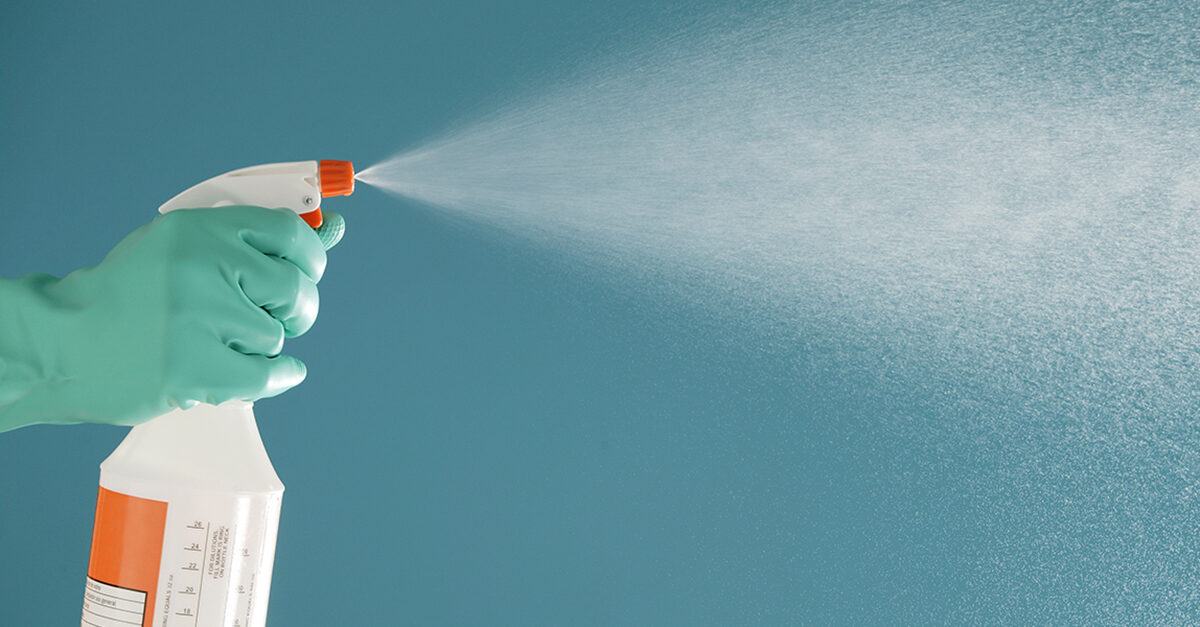When working with cleaning and disinfecting chemicals, it’s often the little things that trip people up, according to Mark Warner, national sales manager with The Bullen Companies.
“The big things are obvious, such as reading product instructions and making sure products are properly labeled,” said Warner. “It’s the little things, such as using the proper dilution, that are sometimes not so obvious and can cause trouble.”
Start with reading
First, we’ll start with the more obvious tips. Just because these best practices seem like no-brainers, it doesn’t mean everyone follows them. Sohn Stancell, director at SSC Services for Education at University of Mary Hardin-Baylor in Belton, Texas, said once professional cleaners have been on the job for a while, many mistakenly think they no longer need to read product instructions.
“After 27 years on the job I still read the labels,” Stancell said. “I read them in front of my employees and then quiz them on the product instructions.”
“You always start a cleaning job by reading the product instructions, then follow up by following the instructions,” added Warner.
Avoid combining chemicals
Another big no-no is mixing incompatible chemicals—mainly chlorine bleach with ammonia or an acidic cleaner—and inadvertently creating a poisonous cloud.
“People like to mix up their own cleaning concoctions, but if you mix the wrong products, you can create toxic gas,” said Warner.
“Workers are always saying, ‘Well, let me mix the degreaser with the disinfectant and throw a little bleach in there to make what I’m cleaning whiter,’” said Stancell. “We’re constantly training employees in our monthly meetings not to do that; it’s an ongoing struggle.”
Both Stancell and Warner admit to mixing mishaps early in their careers.
“In my first two years on the job, I was the person who mixed the wrong chemicals together once and created a toxic cloud,” Stancell recalled. “Ever since then I’ve been lucky to catch employees before they’ve done the same thing.”
Warner vividly recalls the time he poured a small amount of acid cleaner in a toilet bowl to remove a lime stain without realizing someone else had already poured chlorine bleach in the bowl. “I probably could have killed a few people,” he said, adding he always advises people to flush a toilet before cleaning it in case it already contains another chemical.
Warner believes a lack of label-reading and misguided mixing are the two most obvious cleaning chemical mistakes. Read on for the little mistakes that can make a big difference in both safety and cleaning efficiency.
Measure carefully
Chemical dilution instructions are not suggestions, they are instructions to ensure the product works as intended. Measure out the exact amount of product and water specified on the label rather than following the glug-glug technique of freehand pouring.
“Everyone wants to put in just a little bit more, so I have to explain using a bit more doesn’t help,” said Stancell. He drives this point home with an exercise in which he adds too much dish soap to a bowl of water and has people put their hands in the solution.
“They feel how sticky it is and find they have a hard time getting it off their hands,” he said. “Then they realize using solution with too much cleaning product will add a film to surfaces that is difficult to rinse off.”
Not only is using the wrong dilution inefficient, it also can be harmful to health.
“Chemicals are manufactured so they rinse freely. If you use them at two times their recommended strength, the film they leave can attract dirt or pathogens,” said Warner. “If you use a dilution that is too weak, it won’t clean the surface or eliminate the pathogens it was created to kill.”
Stancell recommends that cleaning staff always have a measuring cup or spray bottle with measuring increments on hand. The cleaning team at University of Mary Hardin-Baylor also uses a diluting station that automatically dispenses chemicals at the correct dilution.
Stancell also recommends following directions for water temperature when diluting cleaning chemicals by hand. He said many people think hot water is better for cleaning, but many products require mixing with cold water to keep the chemical bonded to the solution.
Use the correct product
Warner believes another overlooked process is taking the time to choose the right chemical for the job. “Sometimes we see people trying to use some chemistry to do a job it’s not made for,” he said. “Then they have to scrub too aggressively, which can damage the surface and exhaust the worker.”
Choosing the right product often means choosing more than one. Warner explained that although it may be fine to use a gentle product with a neutral pH for regular restroom cleanings, eventually a stronger product will be necessary to prevent soap scum, lime stains, and other problems. He said occasionally using a mildly acidic product will keep mineral stains from building up. Sticking to neutral pH solutions all the time will not remove these stains, and tempt staff to scrub too hard or use steel wool scrub brushes, which can damage surfaces such as fiberglass shower stalls.
Empty equipment after use
If you’re cleaning up a small spill, do you empty and rinse your cleaning tools afterward? Another small mistake that can lead to big problems is not emptying the water recovery tank in a scrub and vac system or saving a bucket of cleaning solution for the next spill.
“The next time you’re in the grocery store and hear ‘clean up in aisle three’ run for your life,” said Warner. “If you ever see that bucket they pull out, it looks like chocolate milk inside, and probably contains E. coli.”
Although it may seem like a budget-conscious idea to save the cleaning solution used after mopping up a small spill, the health risks outweigh the financial benefits. Dirty cleaning solution that is allowed to sit can breed pathogens. Empty all buckets and equipment recovery tanks and rinse them out after each use, no matter how small the cleaning job. Otherwise, the next time you use the bucket of cleaning solution or scrub and vac system to remove ketchup off the floor, you’ll be spreading biofilm full of germs.




